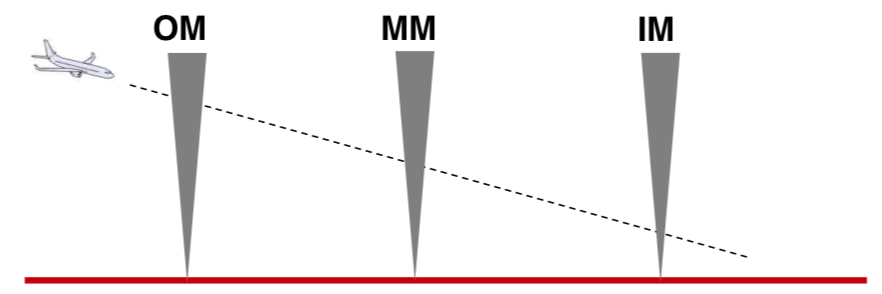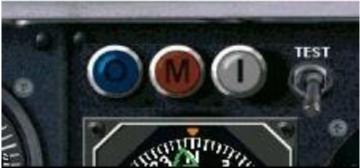¶ Introduction
MARKER beacons provide a light and a sound indication at a published distance from the runway threshold. They operate at a carrier frequency of 75 MHz and are going to be replaced by a systematic use of a DME coupled to the LOC.
Read more about the Marker Beacon (Beacon) here !
¶ Principle
Three beacons can be available:
- Outer Marker (OM): it normally identifies the Final Approach Fix (FAF) and is situated on the same course/track as the LOC and the runway center-line, 4 to 7 NM before the runway threshold. It is typically located about 1 NM inside the point where the GS intercepts the intermediate altitude. The outer marker is often coupled to a NDB (Locator Outer Marker)
- Middle Marker (MM): it is normally positioned 0.5 to 0.8 NM before the runway threshold and is used to alert the pilot that the CAT I missed approach point (typically 200 ft AGL) has been passed.
- Inner Marker (IM): it is located at the threshold of the runway on some ILS approach systems (usually Category II and III) having decision heights of less than 200 ft AGL.

¶ On-Board equipment
The on board maker equipment is located on cockpit and should show the 3 coloured letters "OMI" or 3 coloured lamps (blue, amber, white):

¶ Outer marker
When the aircraft passes over the outer marker antenna, its marker beacon receiver detects the signal. The system gives the pilot a visual - blinking blue outer marker light - and aural -continuous series of 400Hz audio tone Morse code-like 'dashes' sequence.

In the United States, the outer marker can be combined with a non-directional beacon (NDB) to make a Locator Outer Marker (LOM). An LOM is a navigation aid used as part of an instrument landing system (ILS) instrument approach for aircraft. Aircraft can navigate directly to the location using the NDB as well as be alerted when they fly over it by the beacon.
LOMs are identified by two-letter Morse code modulated at 1020 Hz. LOMs use the first two letters of the parent ILS's identification.
¶ Middle Marker
When the aircraft passes over the middle marker antenna, its marker beacon receiver detects the signal. The system gives the pilot a visual - blinking amber middle marker light - and aural - continuous series of 1300Hz audio tone Morse code-like a repetitive one 'dot' and one 'dash' sequence.

¶ Inner Marker
When the aircraft passes over the inner marker antenna, its marker beacon receiver detects the signal. The system gives the pilot a visual - blinking white inner marker light - and aural -continuous series of 3000Hz audio tone Morse code-like 'dot' sequence.

- None
- VID 150259 - Creation
- VID 450012 - Update
- VID 496402 - Wiki.js integration